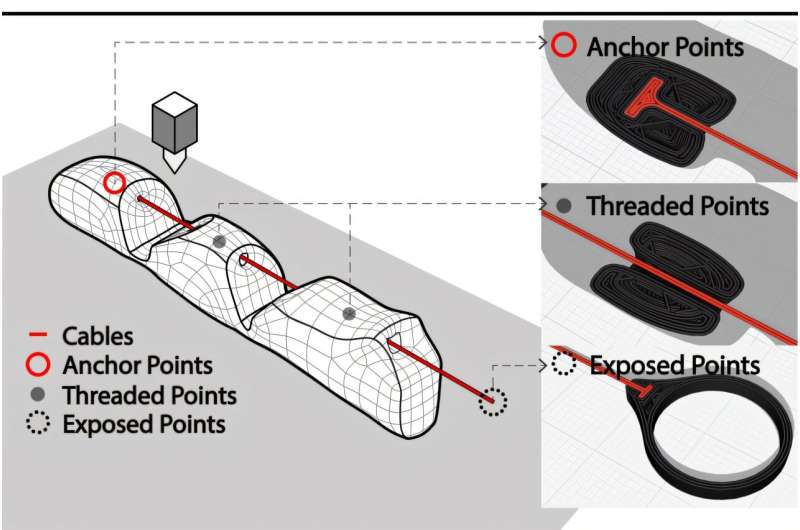This cuts production time by 40% and eliminates complex assembly, allowing users to print dynamic objects—like robotic claws, curling tentacles, and walking lizard robots—in a single step.

MIT’s Computer Science and Artificial Intelligence Laboratory (CSAIL) has unveiled Xstrings, a revolutionary 3D printing technique that simplifies the creation of cable-driven devices. Traditionally, mimicking human-like movements in robots requires complex assembly, but Xstrings streamlines this process by embedding cables directly into 3D-printed structures, cutting production time by 40%.
Xstrings combines design and fabrication into a seamless process. Users input a digital blueprint, specifying motion types such as bending, twisting, or coiling. The system then prints the object with embedded cables and joints in a single step. This eliminates the need for manual assembly, making it easier to create dynamic structures like robotic fingers, interactive art, or even futuristic fashion pieces.
The researchers demonstrated it by printing a range of unique devices:
- A walking lizard robot powered by embedded strings.
- A sculpture with peacock-like motion that expands and contracts.
- A tentacle that curls around objects for gripping.
- A robotic claw that can form a fist for grasping.
These creations highlight the potential of cable-driven mechanisms across various industries, from robotics to art and wearable technology.
High-Precision Fabrication
It uses a multi-material 3D printer to embed cables while constructing rigid exteriors and flexible interiors. The researchers tested durability, with cables enduring over 60,000 pull cycles, proving their resilience. The optimized printing process operates at 260°C and 10-20 mm/s, ensuring structural integrity.
Lead researcher Jiaji Li envisions broader applications: “This technology could one day enable rapid, one-step creation of robots in space stations or extraterrestrial bases.” The team is exploring advanced materials, alternative cable orientations, and more intricate movement capabilities.









